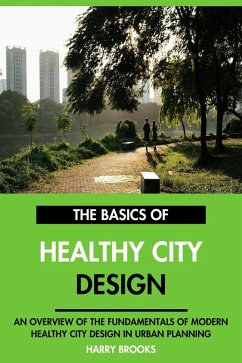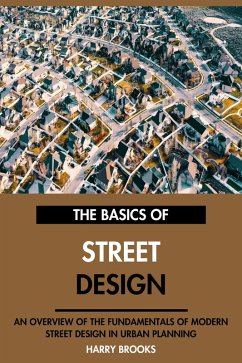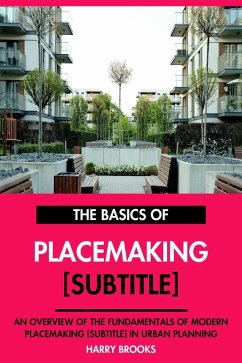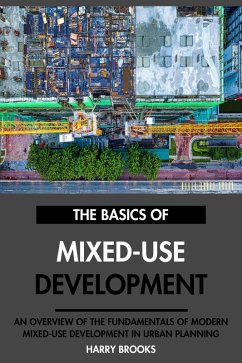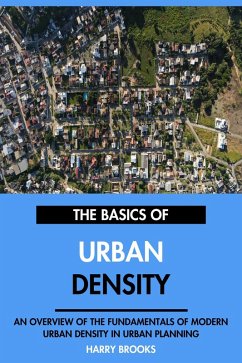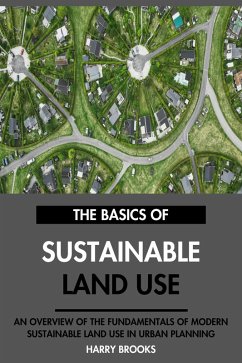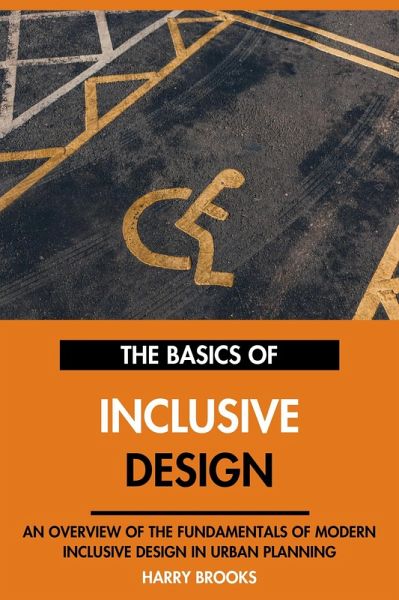
The Basics of Modern Inclusive Design: An Overview of the Fundamentals of Inclusive Design in Urban Planning. (eBook, ePUB)

PAYBACK Punkte
0 °P sammeln!
In an increasingly interconnected world, the need for inclusive design has never been more critical. As urban populations grow and diversify, the challenge of creating spaces that cater to the needs of all individuals, regardless of their abilities or backgrounds, becomes paramount. This eBook aims to explore the fundamental principles of inclusive design, particularly in the context of urban planning. By examining the core concepts and practices that underpin inclusive design, we can better understand how to create environments that foster equity, accessibility, and community engagement.Inclu...
In an increasingly interconnected world, the need for inclusive design has never been more critical. As urban populations grow and diversify, the challenge of creating spaces that cater to the needs of all individuals, regardless of their abilities or backgrounds, becomes paramount. This eBook aims to explore the fundamental principles of inclusive design, particularly in the context of urban planning. By examining the core concepts and practices that underpin inclusive design, we can better understand how to create environments that foster equity, accessibility, and community engagement.
Inclusive design is not merely a trend; it is a necessary approach to urban planning that acknowledges the diverse needs of populations. It is about recognizing that every individual has unique experiences and challenges, and that our built environments must reflect this diversity. This eBook will delve into the various aspects of inclusive design, from its foundational principles to practical applications in urban planning projects. By highlighting real-world examples and case studies, we aim to provide readers with a comprehensive understanding of how inclusive design can transform urban spaces.
Throughout this eBook, we will explore the importance of community engagement in the design process. The voices of residents are invaluable in shaping urban environments that truly meet their needs. By involving community members in the planning stages, we can ensure that their perspectives are heard and integrated into the design solutions. This collaborative approach not only enhances the quality of urban spaces but also fosters a sense of ownership and pride among residents.
Additionally, we will examine the role of technology in promoting inclusive design. As cities become more reliant on digital solutions, it is essential to consider how technology can enhance accessibility and improve the overall experience of urban living. From smart transportation systems to mobile applications that provide real-time information, technology has the potential to bridge gaps and create more inclusive environments.
The eBook will also address the socio-economic factors that influence access to resources and opportunities within urban settings. It is crucial to recognize that not all communities have equal access to essential services, and inclusive design must strive to rectify these disparities. By prioritizing equity in urban planning, we can create environments that empower all individuals, regardless of their socio-economic status.
Ultimately, this eBook serves as a call to action for urban planners, designers, policymakers, and community advocates. Inclusive design is not just a responsibility; it is an opportunity to create vibrant, thriving urban spaces that reflect the diversity of our communities. As we embark on this exploration of inclusive design in urban planning, let us be inspired by the potential for positive change and the power of collaboration.
Through the pages that follow, we invite you to engage with the concepts of inclusive design and consider how they can be applied in your own work and communities. Together, we can build a future where urban environments are accessible, equitable, and welcoming for all individuals, fostering a sense of belonging and connection that is essential for the well-being of our society.
Inclusive design is not merely a trend; it is a necessary approach to urban planning that acknowledges the diverse needs of populations. It is about recognizing that every individual has unique experiences and challenges, and that our built environments must reflect this diversity. This eBook will delve into the various aspects of inclusive design, from its foundational principles to practical applications in urban planning projects. By highlighting real-world examples and case studies, we aim to provide readers with a comprehensive understanding of how inclusive design can transform urban spaces.
Throughout this eBook, we will explore the importance of community engagement in the design process. The voices of residents are invaluable in shaping urban environments that truly meet their needs. By involving community members in the planning stages, we can ensure that their perspectives are heard and integrated into the design solutions. This collaborative approach not only enhances the quality of urban spaces but also fosters a sense of ownership and pride among residents.
Additionally, we will examine the role of technology in promoting inclusive design. As cities become more reliant on digital solutions, it is essential to consider how technology can enhance accessibility and improve the overall experience of urban living. From smart transportation systems to mobile applications that provide real-time information, technology has the potential to bridge gaps and create more inclusive environments.
The eBook will also address the socio-economic factors that influence access to resources and opportunities within urban settings. It is crucial to recognize that not all communities have equal access to essential services, and inclusive design must strive to rectify these disparities. By prioritizing equity in urban planning, we can create environments that empower all individuals, regardless of their socio-economic status.
Ultimately, this eBook serves as a call to action for urban planners, designers, policymakers, and community advocates. Inclusive design is not just a responsibility; it is an opportunity to create vibrant, thriving urban spaces that reflect the diversity of our communities. As we embark on this exploration of inclusive design in urban planning, let us be inspired by the potential for positive change and the power of collaboration.
Through the pages that follow, we invite you to engage with the concepts of inclusive design and consider how they can be applied in your own work and communities. Together, we can build a future where urban environments are accessible, equitable, and welcoming for all individuals, fostering a sense of belonging and connection that is essential for the well-being of our society.
Dieser Download kann aus rechtlichen Gründen nur mit Rechnungsadresse in A, B, CY, CZ, D, DK, EW, E, FIN, F, GR, H, IRL, I, LT, L, LR, M, NL, PL, P, R, S, SLO, SK ausgeliefert werden.





